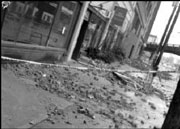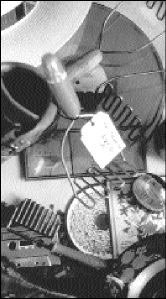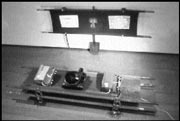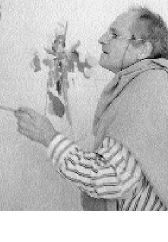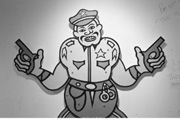WHILE THE REST OF US hunkered down and waited out those bracing 40 seconds, hoping that the earth wouldn’t churn us under for keeps, many artists and gallery owners heard their world literally shattering and saw thousands of dollars fly into worthless shards. More demoralizing than the loss of money in these cases is the loss of time that wrecked work represents.
Worst hit of the Seattle galleries was William Traver Gallery, whose associate director, Daniel Kany, reports staggering losses of about $400,000. The James Harris Gallery was evacuated on Thursday; the building will most likely be condemned and eventually demolished. Kate Elliott of Elliott Brown Gallery reported the loss of only three pieces, but they had a value of approximately $22,000. Elliott is busy getting the word out about the Craft Emergency Relief Fund (CREF), a nonprofit that provides help to craftspeople since most galleries that suffered losses will not compensate artists.
Most other galleries reported little damage, though many gallery buildings require cosmetic repairs. A disco ball fell at ConWorks. The Artists’ Gallery of Seattle lost seven glass pieces. Tom Riley of Riley Hawk Gallery in Kirkland reported minimal damage but intends to redouble his efforts to inform collectors of preventative measures to minimize losses. Flury and Co. in the historic Quilt Building survived with just a broken pot; they weren’t so lucky during the Mardi Gras riots, however, when the gallery was looted.
Local museums weathered the earthquake with almost no incident. The Henry Art Gallery, Bellevue Art Museum, and Tacoma Art Museum suffered no losses. Of thousands of objects on display at the Seattle Art Museum, only two works sustained any damage, both Tang dynasty earthenware pieces, both reparable. Most of the Chihulys scattered around the region did pretty well too. Sadly, however, four of the six pieces of his Venetian series installed in the Washington State Trade and Convention Center were damaged. It remains to be seen how the works in Chihuly’s studio and in private collections fared.
In the seismically unstable Northwest, which, ironically, also happens to be a glassblowers’ Mecca, earthquake insurance is rare. When artworks take a tumble, no one wins, but artists generally have the most to lose. Unsold and uninsured, a broken work of art translates merely to vanished time and creative juices. Artist Nicola Vruwink sums up the situation by asserting, “If I didn’t love it so much, if I could figure out some other way of surviving, God, would I!” She is busy remaking a piece that had been sold but not claimed by its new owner, an 8-inch Superman figure made not of glass but cast sugar. “It’s an involved process,” she says, “somewhat tedious to redo.” Luckily, she thinks that she will be compensated for her time. Many will not.
